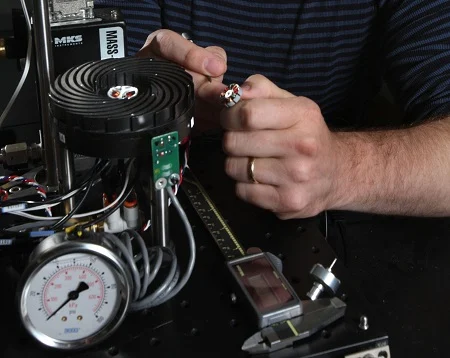In what it calls a “fundamental breakthrough in heat transfer technology for microelectronics,” the U.S. Department of Energy’s Sandia National Laboratories has developed the “Sandia Cooler.”
Also known as the Air Bearing Heat Exchanger, it is essentially a device that uses significantly less energy to cool computing equipment than previous systems.

In a traditional central processing unit (CPU) cooling unit, exhaust heat is trapped in a layer of “dead air” against the cooling fins.
This means the cooling unit has to work harder – and use more energy – to keep the CPU at the desired temperature.
But Sandia’s cooler uses a centrifugal pumping effect to reduce the layer of stagnant air to about a tenth of the thickness of the layers found in other coolers.
The Sandia Cooler also features more aerodynamic and faster-moving cooling blades, which make the device not only more efficient, but quieter.
Currently, Sandia and the cooler’s developer, Jeff Koplow, are looking to license and market the device for commerical use, mainly cooling the large, hard-working computers in data centers and other places where computers are used on a big scale.
In the future, personal computers may also feature the cooling device. Koplow says that the technology “shows great potential for personal computer applications.”
But that’s not all. Besides cooling computers, Koplow recognizes the potential of this device to benefit other areas of technology that require cooling and could be made more energy efficient, such as heating, ventilation and air-conditioning (HVAC).
Koplow says that if the Air Bearing Heat Exchanger can be reproduced correctly in a variety of sizes, it could reduce U.S. power consumption by more than 7 percent.






